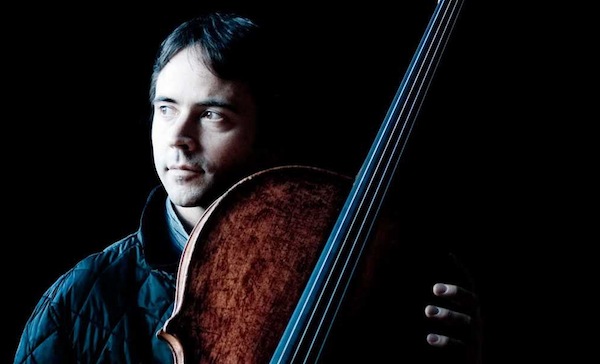Jean-Guihen Queyras reveals the range of Bach’s cello suites

Jean-Guihen Queyras performed the six Bach cello suites Sunday at the Phillips Collection. Photo: Marco Borggreve
The Phillips Collection has just concluded a two-week celebration of Bach’s music for solo strings. After a powerful recital of some of the violin sonatas and partitas by Isabelle Faust last week, Jean-Guihen Queyras performed all six of the solo cello suites on Sunday afternoon. By omitting some of the repeats and generally keeping his tempo choices on the fast side, the French cellist kept this concert under three hours in duration, with a single intermission.
Queyras’s recording of the complete set of suites, on the Harmonia Mundi label, is a decade old now, but his interpretation of these pieces continues to ripen in flavor and complexity. The instrument he plays, made by Gioffredo Cappa in 1696, is older than this music, but Queyras plays with a modern bow and metal strings. The impact of the historically informed performance movement is still important in his interpretation, even with mostly modern materials.
In the First Suite he took the Prelude without much rubato at all, lengthening slightly the bass notes to underscore the harmonic structure. When Queyras did observe the repeats of sections, as in this suite’s gentle Allemande and graceful Sarabande, he added often extravagant embellishments in admirable baroque style. Awareness of the choreographic gestures of the corresponding court dances enlivened the faster movements, especially the crisp, flowing Courante and sprightly Menuetts, with the Gigue light and jaunty rather than ultra-fast.
In his encyclopedic sets devoted to a single genre, Bach often tried to catalog all the possible characteristics available to a composer. Queyras brought out this quality in his approach to the Prelude movements, each of which had a different character. In his hands that of the Second Suite was a singing tragic aria, the Third Suite’s a fleet sort of toccata piece, that of the Fifth Suite more religious in tone, a free-flowing fantasia followed by a solemn fugue.
Bach’s treatment of the dances, too, seems varied in texture and pacing. Although there are no direct indications of tempo or dynamics in the score, Queyras seemed to take cues from the music to reflect Bach’s variety of approach. The Allemande of the Second Suite, for example, was faster in tempo, reflecting its greater use of dotted rhythms and fast runs, matched by a dizzying Courante, statelier Menuetts, and a more luxuriant Sarabande, ornately decorated with rich ornamentation.
Awareness of baroque style led Queyras to use a more détaché style of attack, quite effectively in the detailed Courante of the Third Suite, kept strictly in meter at a dazzling clip. Folk touches were equally affecting, as in the drone patterns of this suite’s Gigue and the lusty reel of the Fourth Suite’s Gigue. The decision to take the intermission between the Third and Fourth Suites broke up Bach’s placement of the suites in pairs matched by the type of paired optional dances featured between the sarabandes and gigues, with the interval splitting apart the pair of suites with bourrées.
The Sarabande was the highlight of the Fifth Suite, because Queyras did not get bogged down in the enigmatic style of its sinuous single melodic line. He took time to place its jagged turns, but the piece never lost the character of a dance, with the repeat of the B section soft as a whisper. Both the Gavottes and the Gigue were more about grace than speed.
Bach wrote the Sixth Suite for a different type of instrument, and when the suites are played in numerical order it can make for a disappointing conclusion. The extremely high writing for a five-stringed instrument, likely the violoncello piccolo, can be perilous on the standard four-stringed cello. Queyras’s refined sound high on the A string was astounding, again taking a moderate tempo in many movements to make an elegant tone up there possible.
Visibly moved, Queyras dedicated his performance of the work to the cause of peace, drawing a connection to the plight of refugees stranded at U.S. airport security checkpoints over the weekend. In the poignant Allemande, a virtuosic Courante, witty Gavottes, and irrepressible Gigue, a sense of joy and hope filled the room, a reminder of music’s power to lift a listener’s spirits.
The Sunday concert series at the Phillips Collection continues with the violin trio Trilogy and pianist Alexander Gurning in their U.S. debut 4 p.m. February 5. phillipscollection.org


